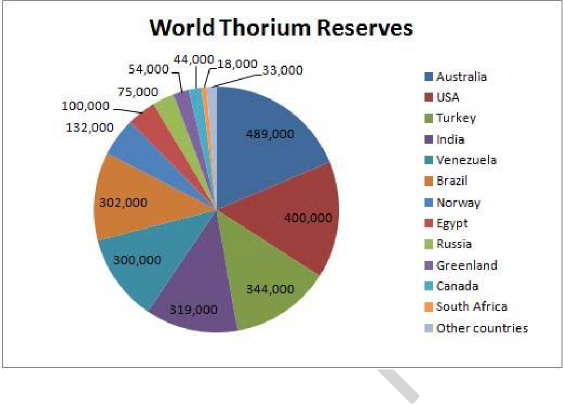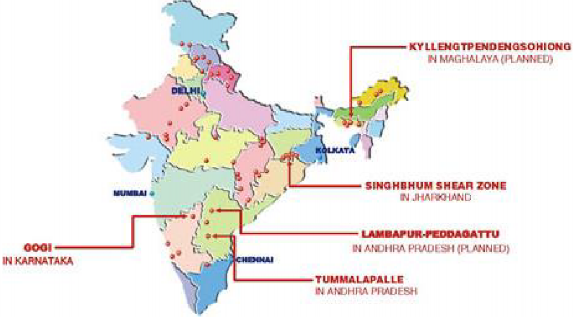Figure 15: Top 10 Uranium producing countries (2010)
Current usage of Uranium is about 68,000 tU/yr. Thus, the world's present measured resources of uranium (5.3 Mt) in the cost category around present spot prices and used only in conventional reactors, are enough to last for about 80 years.
Thorium as a nuclear fuel
Today uranium is the only fuel supplied for nuclear reactors. However, thorium can also be utilised as a fuel for CANDU (CANada Deuterium Uranium) reactors or in reactors specially designed for this purpose. Neutron efficient reactors, such as CANDU, are capable of operating on a thorium fuel cycle, once they are started using a fissile material such as U-235 or Pu-239. Then the thorium (Th-232) atom captures a neutron in the reactor to become fissile uranium (U-233), which continues the reaction.
Thorium is about 3.5 times more common than uranium in the Earth's crust. Present knowledge of the distribution of thorium resources is poor because of the relatively low-key exploration efforts arising out of insignificant demand. World distribution of Thorium reserves is shown in figure 16. India and Australia are believed to possess about 300,000 tonnes each; i.e. each country possessing 25% of the world's thorium reserves.

Figure 16: World Thorium reserves (in tonnes) (2005)
3.5.1. India
India has relatively modest reserves of uranium. India's uranium resources are modest, with 102,600 tonnes U (tU) as reasonably assured resources (RAR) and 37,200 tonnes as inferred resources in situ at January 2011. However, department of atomic energy claims to have reserves of 1, 86, 653 tU in 2013. Andhra Pradesh followed by Jharkhand and Meghalaya in that order is top state with largest uranium reserves.
With rise in number of reactors, India expects to import an increasing proportion of its uranium fuel needs. In 2013, India imported about 40% of her uranium requirements from France, Russia and Kazakhstan. India’s Uranium mines are shown in figure 17. Ministry of Environment and Forest rejected the proposal of uranium mining in Mehgalaya keeping in view of the sentiments of the local people and a number of representations received from local civil society group. Following are the uranium mines in Jharkhand’s Singhbhum zone:
♤ Jaduguda Mine
♤ Bhatin Mine
♤ Turamdih Mine
♤ Bagjata Mine
♤ Narwapahar Mine
♤ Banduhurang Mine
♤ Jaduguda Mill
♤ Turamdih Mill
♤ Mohuldih Mine
Major areas which are currently under survey and exploration to augment uranium reserves in India include:
♤ Tummalapalle-Rachakuntapalle, Kadappa district, Andhra Pradesh
♤ Koppunuru and adjoining areas, Guntur district, Andhra Pradesh
♤ Rohil and adjoining areas, Sikar district, Rajasthan
♤ Wahkut and Umthongkut areas of West Khasi Hills district, Meghalaya
♤ Gogi, Yadgir district, Karnataka
♤ Singridungri-Banadungri, East Singhbhum district, Jharkhand and
♤ Bangurdih, Seraikela-Kharsawan district, Jharkhand.

